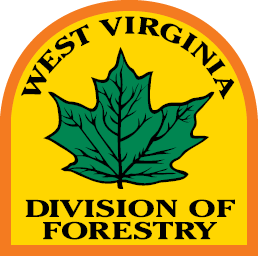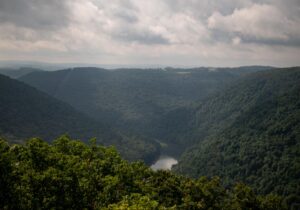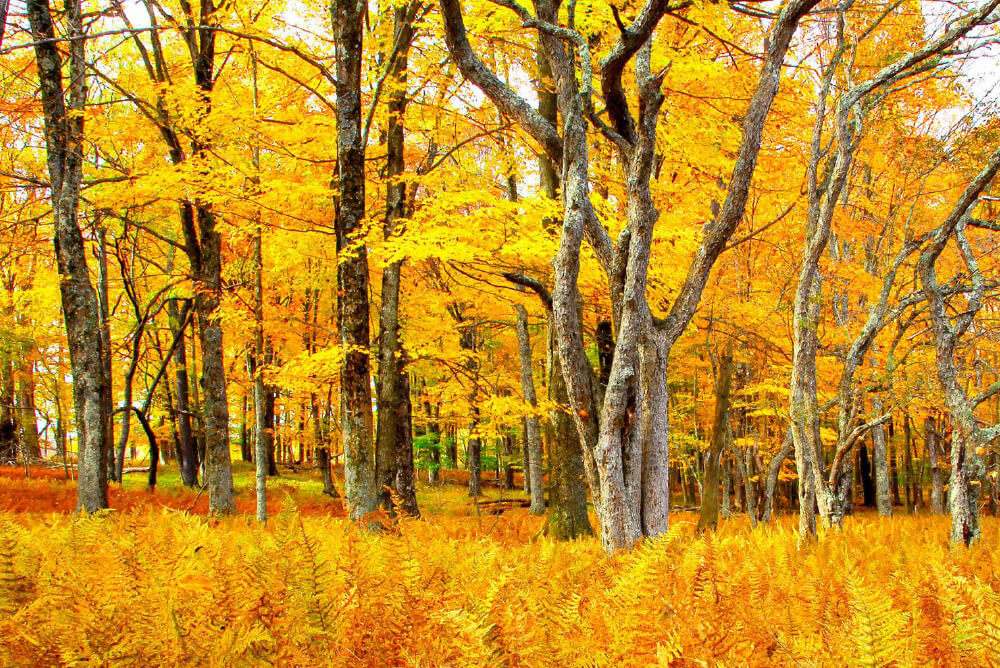West Virginia’s forests are under threat from invasive plants and insects. The invaders crowd out, feed on or destroy the native life. Many conservation organizations count invasive species among the top five global threats to biodiversity.
Of course, not every plant or animal introduced to the continent presents a threat. For example, hostas, tulips and peonies are not native to the U.S. but do not compete with or destroy native plants.
The U.S. Forest Service defines an invasive species as:
- Not indigenous to the ecosystem they occupy.
- By its presence, causes harm or is likely to cause harm to that location’s environment or economy.
Invasive species: out of natural order
“Invasive species are a global problem resulting in damage to ecosystems, monetary loss from damage to forestlands and agricultural crops,” said Travis Miller, assistant state forester, state lands, with the West Virginia Division of Forestry.
Miller and his team of six foresters oversee all forest management activities on more than 70,000 acres of state lands across the state.
“Invasive species threaten the beauty of our state, competing with our native flora and fauna,” he said. “As you travel down our country roads, you can find many areas where less appealing invasive species have taken over, out-competing native species that we love so much.”
Each year, invasive species damages cost the United States an estimated $120 billion per year.
“Just about all invasive species can be destructive, either by physically damaging other plants, like bittersweet climbing and girdling a tree, to outright outcompeting and thus eradicating native species through taking growing space and resources,” said Joshua Simons, State Lands Forester assigned to Kumbrabow State Forest. “Some invasive plants even produce chemical compounds in their leaves and root systems that inhibit growth of native plants around them.”
Invasive plants and insects can alter the local environment, degrade habitat, and result in the loss of already threatened and endangered plant species.
“Invasive species effect more than just the woodlands,” Simons said. “An example is the relationship between the invasive Japanese barberry and Lyme disease. The barberry provides a preferred habitat type for the white footed mouse, which is the primary vector for the ticks that carry Lyme disease.”
Service Forester Rosey Santerre cited some of the common invasive insects preying on our West Virginia forests:
- Hemlock wooly adelgid, first reported in West Virginia in 1992. The insect sucks sap from hemlocks and spruce trees and has killed hundreds of acres of old-growth hemlock in this country.
- Emerald ash borer, first recorded in this state in 2007 by the West Virginia Department of Agriculture. The bright metallic green beetle is responsible for the destruction of tens of millions of ash trees in 30 states.
- Spongy moths, brought from its native Europe to the U.S. in 1869 by a French scientist.
“The first adult male spongy moths were trapped in West Virginia in 1972,” said Quentin “Butch” Sayers, assistant director of the West Virginia Department of Agriculture, Plant Industries Division. “I found the first caterpillars in 1978 on the Appalachian Trail in Jefferson County.”
According to the U.S. Department of Agriculture (USDA), the spongy moth is “one of the most destructive pests of trees ever to be introduced into the United States.” Since 1970, spongy moths have defoliated more than 75 million acres in the United States.
New invasive species continue to join the fray.

“Spotted lanternfly is a new invader to our region that was first found in West Virginia in 2019,” said Santerre. “Spotted lanternfly threatens many orchard crops including grapes, hops, apples, walnuts and other hardwood trees. Spotted lanternfly differs from many of our other forest pests because it has such a wide range of appetite, where many of our other recent forest pests just feed on one specie or genus of plants.”
“With some of these invasive species, we don’t know the repercussions until years later,” said Simons. He cited the tree of heaven, brought to the U.S. in the 1700s as a horticultural specimen and shade tree. The tree not only spreads aggressively but turns the soil toxic to native plants.
“The tree of heaven has been around for years. Now the Spotted lanternfly has come to our shores — and that tree is a preferred species of this invasive insect,” he said. “These species are not part of our natural order of things in the ecosystem and really cause havoc on the balance of nature.”
A potential threat not yet sighted in West Virginia is the Asian longhorned beetle.
“The states with known infestations of Asian longhorned beetle include New York, Massachusetts, Ohio and South Carolina,” Santerre said. “They feed on a variety of hardwood trees including ash, willow, maple and birch.”
According to the USDA Animal and Plant Health Inspection Service, the beetle “has the potential to cause more damage than Dutch elm disease, chestnut blight and spongy moths combined, destroying millions of acres of America’s treasured hardwoods, including national forests and backyard trees.”
The chestnut blight cited by the USDA altered the composition of forests from Maine to Georgia. Before 1900s, chestnut trees accounted for 50% of eastern hardwood forests. The tree’s straight stem served building and carpentry trades. The edible nuts were a cash crop and provided food for wildlife, farm stock and people. A fungus, imported accidentally, was first noticed on chestnut trees in New York in 1904. By 1925, the fungus blight had killed the American chestnut over a 1,000-mile range. The blight continues to kill American chestnut trees today.
“Now mature American chestnut trees are basically non-existent,” Santerre said. “They usually get the blight by the time they are 6 inches in diameter and dieback. Losing the American chestnut tree was hard for Appalachian ecosystems and economies.”
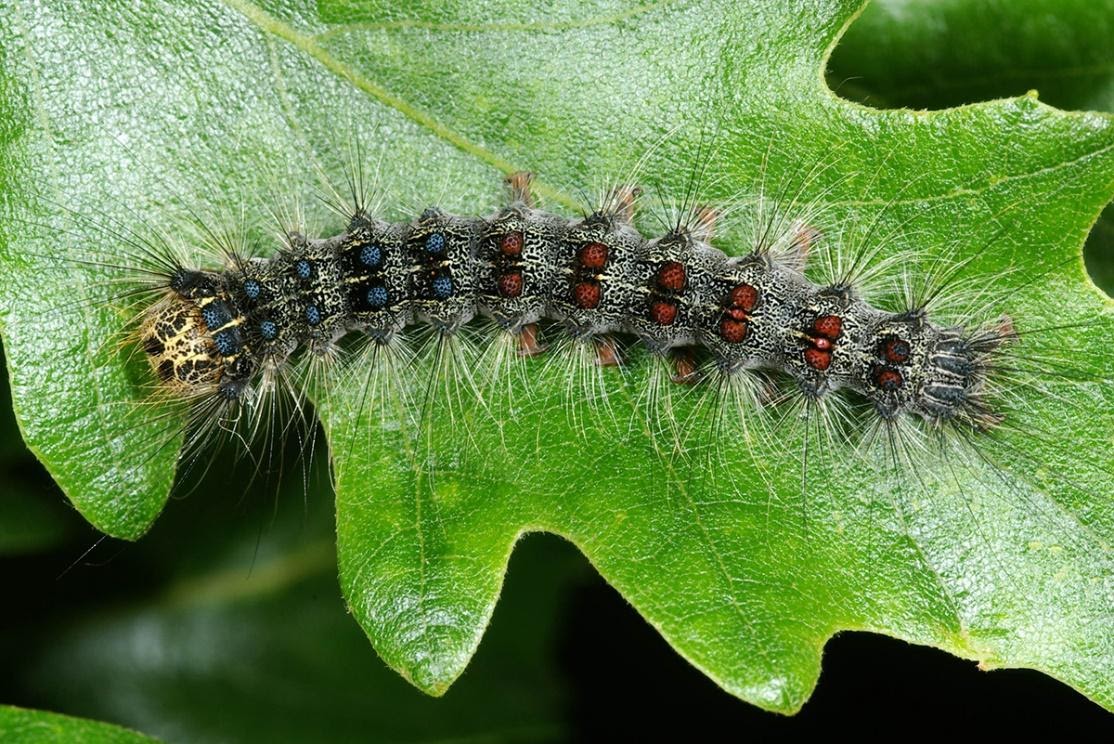
Unnatural habitat lacks natural controls
In their native habitats, plants and insects face conditions that normally contain them in their natural niche.
“Plants that are not indigenous to the area tend to propagate aggressively,” said Simons. “They can out-compete native species and replace them in the landscape. Left unchecked these nonnative species will overtake our woodlands and the ecosystem we love will be lost.”
The losses are noticeable already. The U.S. Forest Service reports that invasive plant species “have contributed to the decline of 42% of U.S. endangered and threatened species, and for 18% of U.S. endangered or threatened species, invasives are the main cause of their decline.”
Simons can see the difference already.
“I have seen in my own areas where digitalis foxgloves — once grew have been replaced by Japanese Spirea,” he said. “My kids may never see those beautiful plants that I have enjoyed, along with the butterflies and bees.”
Santerre said, “Often an invasive species is unchecked by native predators or environmental controls in its new environment. For example, in its native range, the emerald ash borer is kept in check by a variety of predators, including several species of parasitoid wasps. Researchers have been conducting trials to introduce some of these predators to help control the emerald ash borer. This method of managing invasive species is called biocontrol.”
Biocontrol aims to recreate a balance by introducing the natural enemy of the invasive pests. Santerre pointed out that biocontrol must be used with caution to ensure the introduced predator will suppress only the intended prey — the invasive emerald ash borer and not negatively affect native species.
Kumbrabow State Forest has a few natural advantages that have helped protect it against many but not all — invasive species.
“Being in a high elevation, Kumbrabow has a shorter growing season and the conditions are harsher,” Simons said. “Its remote location and lack of major roadways has kept it a little more sheltered.”
The invasive autumn olive shrub has attempted to make itself at home at Kumbrabow, but so far has been unsuccessful.
“In the lower elevations, autumn olive would have spread like wildfire,” he said.
Stilt grass has put up more of a fight.
“I have eradicated stilt grass in pockets where it might pop up. I still have some areas that I have to treat continually,” he said. “I have really made headway, but it still persists due to the amount of seed in the seed bank. In some areas, I have been able to catch it early and eradicate it outright. I have had good luck with using grass-specific herbicides for stilt grass, although costly. It kills only the grass and allows the broadleaf forbs to grow and thus compete more successfully.”
After years of treating miles of Piney Mountain Fire Trail, Simons has not seen stilt grass return there for two consecutive growing seasons.
“I have dodged a bullet in that my invasive treatment on Kumbrabow is spot-treating problem areas, not addressing non-native invasive species over the entire acreage,” he said.

How you can fight the spread
Birds, wildlife, winds and their own aggression have helped invasive plant and animal species spread. Another factor that has helped propel the spread is people. Humans can also help halt or at least slow its pace.
Santerre and Simons recommend actions people can take:
- Do not move firewood. Humans moving firewood is one of the primary means for the emerald ash borer to enter new areas. USDA Forest Service research has shown that no matter how the logs were cut or stored, emerald ash borers could survive and emerge from the firewood even two years later.
- Clean. Before relocating from one area especially an area with possible invasive plants or animals clean equipment such as boats, tractors, vehicle tires, bicycles, even your shoes. Small seeds or insects will be all too happy to hitch a ride on socks, treads or paddles.
- Leave it. If you see something unfamiliar, don’t dig it up or pick it and take it home.
- Identify. Guides, naturalist classes and technology such as the iNaturalist phone app can help you identify whether the plant or insect you see is invasive.
- Report. If you detect a species that is not yet widespread such as the Spotted lanternfly, email the West Virginia Department of Agriculture at [email protected]. Include a photo, a location and your contact information. If you collect a sample of the insect, make sure the sample is dead to reduce the risk of the creature escaping and infecting new territory.
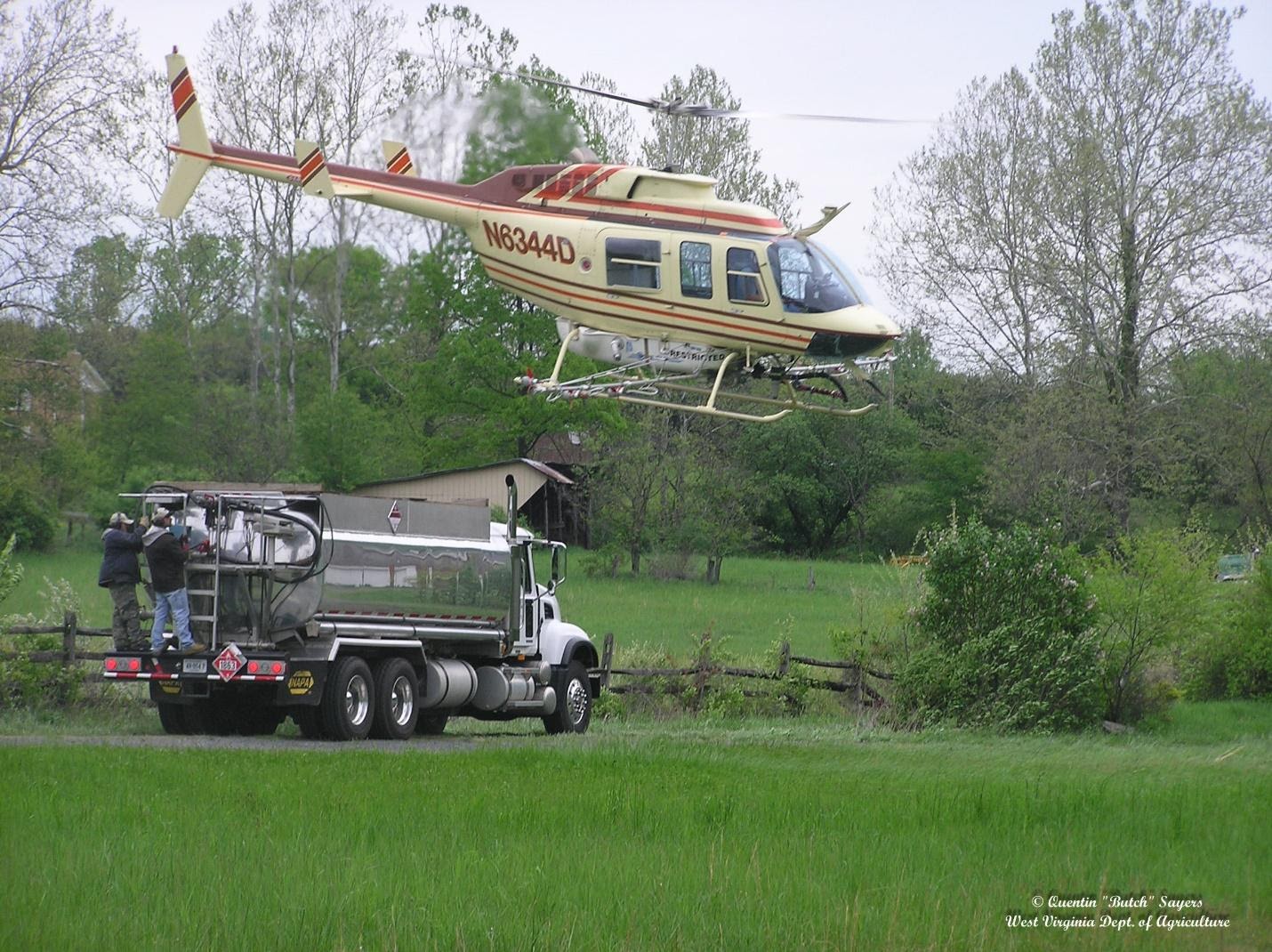
Other recommendations, resources and contact information is available on the West Virginia Division of Forestry website wvforestry.com Invasive Species tab under Education.
“Invasive species are real and they are a real threat to the natural beauty of the Mountain State,” said Assistant State Forester Miller. “Everyone can play a role in slowing the spread of invasive species by following simple practices while enjoying the great outdoors.”
For more information, visit the U.S. Forest Service website on invasive species.

